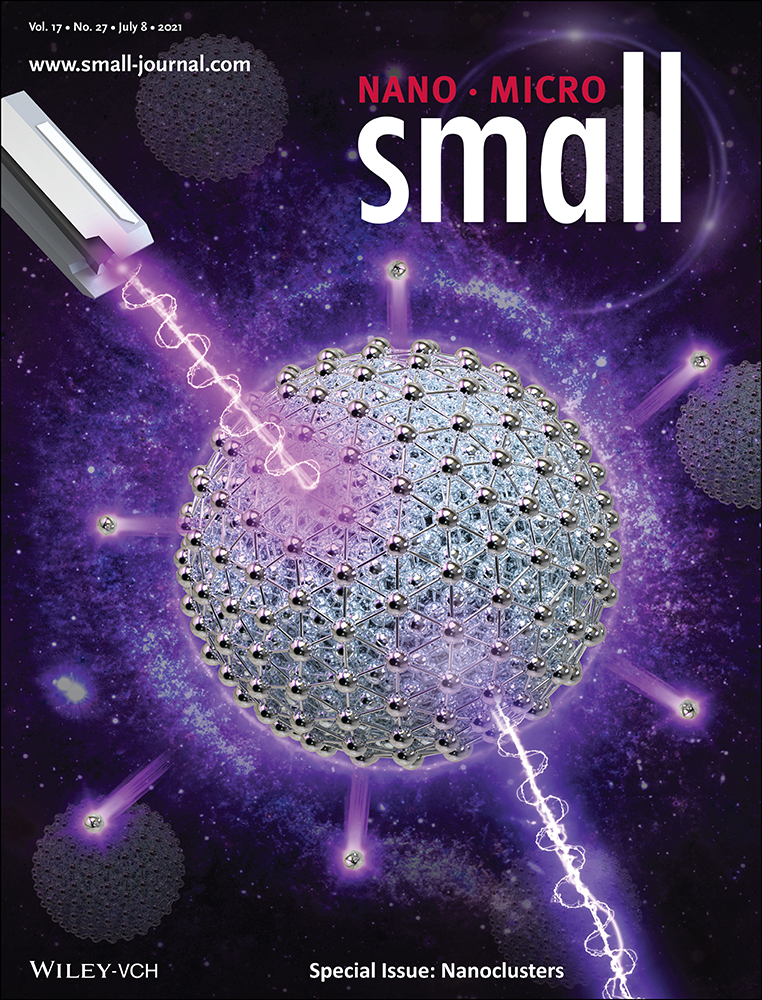Special Issue on “Nanoclusters”: A Glimpse into the Efforts to Redefine Matter at the Nanoscale
Matter at the nanoscale is being redefined. One of the most evident aspects of this evolution is centred on nanoclusters (NCs) or atomically precise clusters (APCs), and most of the work in this area is on APCs of noble metals, and especially clusters of gold. Just to give an indication, of the over 572 papers published with “atomically precise cluster” in the title or abstract (as listed by the Web of Science as of March 31, 2021), 405 were on gold, 86 on silver and 81 on other materials. Among those APCs of gold, the most studied cluster is Au25L18-, with ligands (L) such as glutathione and phenylethane thiol.
This speaks simultaneously about the limitations and opportunities in the area, on the need to discover new clusters and new ligands. Visible gaps include missing nuclearities, alloys, cluster adducts, polymers, and assemblies. A somewhat deeper exploration of the literature reveals the absence of well-defined principles for cluster synthesis of all nuclearities, their stabilities, transformations, etc. It is also clear that NCs can be formed by any kind of matter, and greater efforts are needed to diversify into oxides, chalcogenides, pnictides and others. While the synthesis, identification, and structures of APCs have been central aspects of recent research, their properties as individual clusters and assembled solids are becoming important. Luminescence has been the most explored property, while mechanical, electrical, and magnetic properties are slowly gaining attention.
The complexity of NCs is increasing, both compositional and structural, in terms of core and ligand. Complex structures result in new properties such as chirality. Assemblies can also result in complexities, and they too can be chiral. Ligand arrangements and multiple possibilities in structures can result in isomers. These pose challenges in synthesis, separation, crystallisation, and understanding of structures. In addition, as many clusters are similar in size and are prepared with the same or compatible ligands, it is possible for them to co-crystallize in different ways. As a diverse family of clusters are available now and as several of them are of similar size and shape, this possibility can produce very new materials with a combination of properties of the participating clusters. Assemblies can arise in several other ways as well: between NCs themselves, between NCs and nanoparticles, and also between NCs and molecules.
As more and more NCs, their crystals, assemblies, and properties are explored, a detailed understanding of structure-property relations becomes a central aspect of their study. At the same time, all-electron computations become complex and often impossible on larger NCs and newer methods have to be developed. Not only the standard requirements of electronic energy levels and optical spectra, but also complex questions associated with conformations of ligands over the cluster surface, solvent-accessible sites, mechanisms of transformation and the associated energetics are important to understand. As assemblies become more important, there is a need to have them computed as well.
These knowledge gaps and clear possibilities necessitate the introduction of new methodologies to explore NC science. Recently, the area has seen the induction of many gas phase spectroscopy techniques to understand their electronic structure, chemical reactivity, shape, isomers, etc. Photophysics of NCs is being explored and excited states are being studied with greater time resolution. Carrier dynamics at varied timescales present new opportunities for NCs in photochemistry and energy transfer. Other stimuli such as pressure and temperature reveal new aspects of their properties.
As this area expands, properties translating to applications are becoming evident. It is being realised that APCs are indeed molecules. Composition, geometric and electronic structures, chemical properties, reactivity and associated kinetics and thermodynamics are consistent with this description. The size and shape of several such molecules are similar to biomolecules, and both resemble each other in terms of organisation and hierarchy. Combining APCs with biomolecules and complex entities such as viruses using chemical principles can produce even more diverse systems with new properties useful for biology.
For quite some time, the principal focus of NCs has been on luminescence, especially in the near-infrared region, in view of potential applications in biolabeling and imaging. This subject area is dominated by protein- and DNA-protected clusters. The other recognised application of NCs is in the area of catalysis, where several oxidation reactions have been identified. A deeper understanding of such processes requires films of NCs, explored with finer tools of imaging and spectroscopy.
All of these directions pertaining to the research of NCs are captured to varying degrees in this special issue. Many of the important practitioners of the area as well as several younger researchers present their work here. In 9 review-type articles and 20 original research papers, this special issue captures many of the emerging directions. An aspect particularly important to note is the participation of nearly all regions of the world and its associated diversity.
I am sure that young researchers in the area will see new pointers from these papers. For others from the larger area of small matter, new connections will be established.
I am immensely thankful to the editorial team of Small, especially Dr. Lisa Smith, who took care of every aspect of this special issue. I am thankful to the journal and the publisher for recognising the area in the form of a special issue.
I hope that you will enjoy reading this collection.
Thalappil Pradeep

Thalappil Pradeep is an Institute Professor at the Indian Institute of Technology Madras, Chennai, India. He is the Deepak Parekh Institute Chair Professor and is also a Professor of Chemistry. He studied at the University of Calicut, Indian Institute of Science, UC Berkeley, and Purdue. His research interests are in molecular and nanoscale materials and he develops instrumentation for such studies. In addition to the work on advanced materials, he is involved in the development of affordable technologies for drinking water purification and some of them have been commercialized. Visit http://www.dstuns.iitm.ac.in/pradeep-research-group.php for more information.




